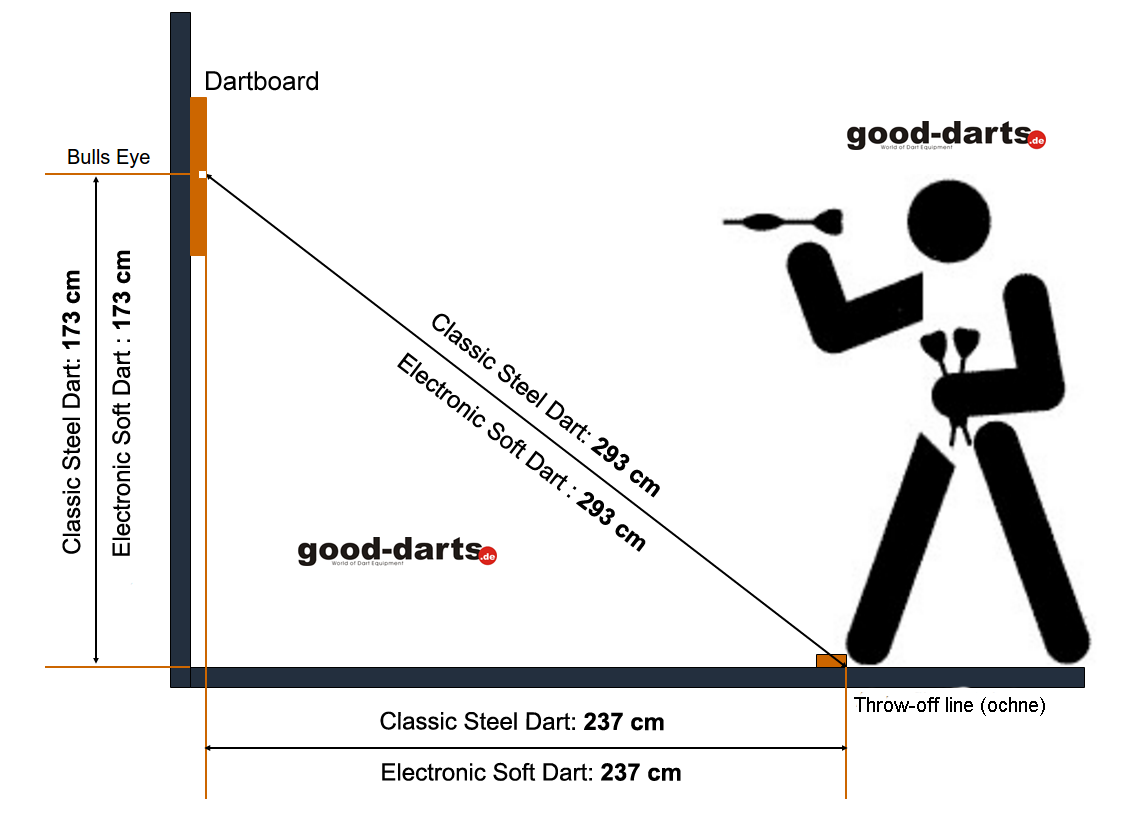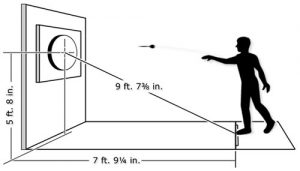Regulation Dart Length : What it is
Regulation Dart Length: What It Is Darts is a popular game that requires skill, precision, and accuracy. Whether you're a casual player or a professional, understanding the regulations and dimensions of a dartboard is crucial to improve your game. One of the key aspects of dart regulation is the dart length, which plays a significant role in determining the distance between the throw line and the dartboard. In this article, we will explore the concept of regulation dart length, its importance, and how it affects your gameplay. 1. Understanding Regulation Dart Length Darts is a game where small, pointed missiles, called darts, are thrown at a circular target, known as a dartboard. The regulation dart length refers to the total length of the dart, from the tip to the end of the flight. In the sport of darts, there are specific rules and guidelines set by governing bodies, such as the Professional Darts Corporation (PDC) and the World Darts Federation (WDF), that define the acceptable dimensions for darts, including their length. 2. Importance of Regulation Dart Length The regulation dart length is crucial for maintaining fairness and consistency in the game of darts. By adhering to a standard length, players can ensure a level playing field, as everyone has access to the same equipment specifications. Moreover, the length of the dart affects its flight and trajectory, making it essential for players to understand its impact on their throws. 3. How Dart Length Affects Gameplay The length of a dart plays a significant role in determining its stability and accuracy during flight. Generally, shorter darts are more stable but may require a higher degree of skill to throw accurately. On the other hand, longer darts offer greater control but may be less stable. Finding the right dart length that suits your throwing style and grip is crucial for maximizing your performance. Now that we've covered the basics of regulation dart length, let's explore a few frequently asked questions (FAQs) to provide you with a more comprehensive understanding. FAQs: Q1: What is the standard regulation dart length? A1: The standard regulation dart length, as defined by the governing bodies of darts, is 6.35 inches (16.15 cm), including the tip and the flight. Q2: Can I use longer or shorter darts than the regulation length? A2: While the regulation dart length is highly recommended for competitive play, recreational players can experiment with different lengths to find what suits them best. However, it's important to note that deviating too much from the standard length may affect your gameplay. Q3: How do I measure the length of my darts? A3: To measure the length of your dart, place a ruler or measuring tape against the dart's tip and extend it to the end of the flight. Make sure to include the entire length, including any additional accessories like shafts or tips, for an accurate measurement. In conclusion, understanding the regulation dart length is crucial for any aspiring dart player. By adhering to the defined standards and guidelines, you can ensure fair play and better your chances of success. Experimenting with different dart lengths can help you find the perfect fit for your throwing style, grip, and overall gameplay. So, go ahead, grab your darts, and start practicing to take your game to new heights!  Image Source : www.pinterest.com
Image Source : www.pinterest.com  Image Source : www.jlcatj.gob.mx
Image Source : www.jlcatj.gob.mx  Image Source : www.pinterest.de
Image Source : www.pinterest.de  Image Source : www.zazzle.com
Image Source : www.zazzle.com  Image Source : www.pinterest.de
Image Source : www.pinterest.de  Image Source : www.pinterest.com
Image Source : www.pinterest.com  Image Source : kalavarzesh.com
Image Source : kalavarzesh.com  Image Source : www.pinterest.com
Image Source : www.pinterest.com
Regulation Dartboard Height And Distance - How To Play Darts | Hanging
 Image Source : www.pinterest.com
Image Source : www.pinterest.com board darts dart distance dartboard height floor regulation hanging wall high play game tip room official standard backboard hang soft
Regulation Dart Distance Sales Cheap, Save 69% | Jlcatj.gob.mx
 Image Source : www.jlcatj.gob.mx
Image Source : www.jlcatj.gob.mx Dartboard Height And Hanging Instructions | Dart Board Wall, Dartboard
 Image Source : www.pinterest.de
Image Source : www.pinterest.de Purple And Black Regulation Dart Board | Zazzle
dart regulation purple board
33 Partyraum-Ideen In 2022 | Partyraum, Partyraum Ideen, Kellerbar Design
 Image Source : www.pinterest.de
Image Source : www.pinterest.de Easy Text Personal Aqua And Black Regulation Dart Board | Zazzle
 Image Source : www.pinterest.com
Image Source : www.pinterest.com آموزش پرتاب دارت و نحوه محاسبه امتیازات، نشانه گیری و فاصله قانونی آن
 Image Source : kalavarzesh.com
Image Source : kalavarzesh.com Pin By Adam Belanger On Stuff | Hanging A Dart Board, Dart Board Wall
 Image Source : www.pinterest.com
Image Source : www.pinterest.com darts dartboard distance cork basement remodeling billiard
Dart regulation purple board. Regulation dart distance sales cheap, save 69%. Dartboard height and hanging instructions. Purple and black regulation dart board. Darts dartboard distance cork basement remodeling billiard